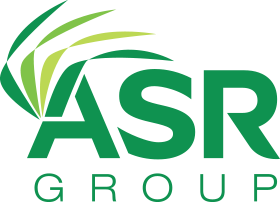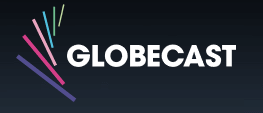USA
800 691 9120
UK
01225 704844
We use cookies on our website to analyze website usage and to help secure the website against misuse. Advertising and functional cookies are not used in our site or our web application products.
By clicking “Accept Essential Cookies Only”, you consent to us placing these cookies.
Peter Drucker wrote that "You can’t manage what you don’t measure." That philosophy applies to business in general, and in the current automated and connected environment it applies especially to technology assets. Long gone are the days of centralized data processing, where most IT assets were housed and operated in a single facility. Also gone are the days when all IT assets were found behind a firm’s firewall and the assets were owned and controlled by the company. Cloud computing has changed the entire landscape of corporate computing, but it has not eliminated the need for IT professionals to manage, measure and monitor all of their IT assets.
Managing IT assets, both hardware and software, that are "behind-the-firewall" is a mature business and has been an established practice for over twenty years. There are numerous tool sets available that enable IT managers to discover, inventory, evaluate and reconcile hardware and software assets. But, what about cloud assets? Software-as-a-Service (SaaS) assets need to be counted and reconciled. Server and storage use needs to be managed to match existing needs. As Kim Crawley of AlienVault (now an AT&T company) wrote in an article entitled Reviewing Best Practices for IT Asset Management in the Cloud, "With the implementation of cloud networks, these IT assets become cloud assets too..." But making sure your cloud-hosted assets function well and maintain security is its own area of knowledge: cloud asset management. There are challenges involved in cloud asset management which differ from managing assets on your own infrastructure. For instance, developers and administrators often don’t use the security tools that their cloud providers offer them. Also, visibility into your assets can be more difficult in the cloud."
No IT manager would want to guess as to how many software licenses the company needs, or what level of processing capabilities were needed. But it is what’s happening in many firms using cloud-computing services. In addition, measuring and accounting for cloud assets is becoming even more critical as major software providers are moving to cloud-based products. Microsoft’s Windows 10, Office 365 and Adobe’s entire suite of products are prime examples. It is becoming more difficult to maintain a single resource where all of a company’s IT asset information can be stored, accessed and analyzed.
Few companies have a single cloud or SaaS provider. It is not uncommon for a firm to use Salesforce.com sales management solutions, Windows 10 OS and Office 365 applications as well as maintain off-site database and file storage on AWS, Microsoft Azure or Google Cloud. That’s in addition to whatever assets the firm owns and operates. Managing all of those assets becomes a complex mission involving numerous reporting and tracking resources.
Working to address the evolving needs of today’s IT managers, xAssets products include the capability to discover cloud assets and bring them into the same database. This gives a single, unified, holistic view of all your assets in one single solution. The xAssets IT asset management solution[3] includes all the technology needed to discover and manage cloud assets and even entire data centers. Rather than managing cloud assets in a separate database or a separate solution, we recommend that cloud assets are managed in the same way as network assets and other corporate assets. Cloud assets can be discovered using our discovery toolset which includes technology to discover remote assets behind firewalls and with different credentials.
xAssets achieves this through two models
The xAssets solution provides numerous benefits to the IT asset manager working with both cloud and "behind-the-firewall" assets. They include:
As Crawley noted in her article "Automation, when well implemented, helps to reduce the possibility of human error, saves labor costs, and also makes everything more efficient. Cloud management tasks are often tedious and repetitive. And when it comes to tedium and repetition, computers always out-perform human beings." Managing all of the enterprise’s IT assets in one coordinated, continuously updated resource will lead to cost efficiencies, improved controls and better risk management. To quote Peter Drucker once again, "What's measured improves."
For more information on how your cloud-computing operations can benefit from xAssets IT asset management technology, visit us at www.xassets.com, or call us directly on 800-691-9120 ext. 304.
xAssets ITAM solutions helps organizations meet critical ISO 19770 Compliance Standards for discovery networks of all sizes, with no side effects and no agents. The software includes a Configuration Management Database (CMDB), allowing Hardware Inventory, IT Asset Management, Software Asset Management and Software License Compliance within a single browser application. Enterprise and government customers also benefit from software configuration options and system scalability that can support more than 100,000 Windows devices and up to one million total assets.
xAssets is uniquely positioned in the world of IT asset tool providers, as the applications have been approved and certified by the US Air Force for use on the SIPRNet and NIPRNet classified computing data networks. For the past 10 years, customers have been assured of the accuracy of xAssets' software license audit reports, approved by the SIIA.
xAssets' comprehensive product set includes both cloud-based and installed versions, addressing IT Asset Management (full lifecycle) Fixed Asset Management, Financial Asset Management, Software Asset Management, Enterprise Asset Management, Service Management and Network Discovery.
xAssets' solutions are fully scalable and used by major corporations and government agencies. xAssets has also been selected by some of Microsoft's LARs to perform annual true-up audits to help organizations maintain both their software licensing and hardware infrastructure.
xAssets provides proactive, consultative support to customers throughout the product lifecycle to ensure that our customers' requirements are met or exceeded.
Free instances are free forever and can show demo data or your data.































